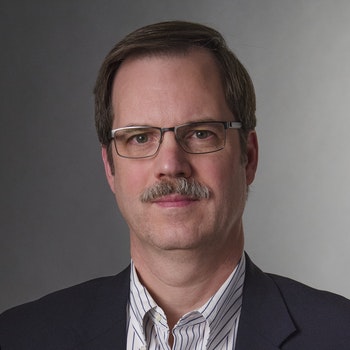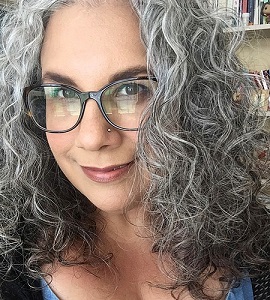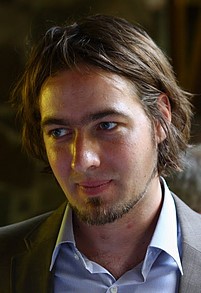
When study abroad stayed on pause this fall, Kalamazoo College faculty and staff got creative. In a short period of time, they developed positive, educational experiences for many of the juniors who expected to spend time in another country, showing the strength of the College’s relationships with its external partners.
“Our challenge partly was to identify what students could do to engage with our international partners and folks off campus, but the question was what that would look like,” Center for International Programs Executive Director Margaret Wiedenhoeft said. “It took working with our partners to see what would be possible.”
The solution for this term was a unique set of internships offered through K’s Center for International Programs (CIP), Center for Career and Professional Development (CCPD), Center for Civic Engagement (CCE) and Center for Environmental Stewardship (CES). The opportunities were designed quickly as a credit-granting class that provided work experience to 20 juniors, allowing them to build their resumes.
Five of those juniors, in fact, still had a chance to learn about another culture in working at virtual international internships with K partners overseas. Addissyn House, Ella Knight and Julia Bienstock are working with the Universidad de Extremadura in Cáceres, Spain, writing articles on current events from a U.S. perspective; and Reyna Rodriguez and Maricruz Jimenez-Mora are teaching English as a second language to people in San Jose, Costa Rica.
‘The Perfect Internship’
For House, Knight and Bienstock, this meant working virtually on a weekly basis with Gemma Delicado, an associate dean and study abroad director, on producing articles for the December issue of Vice Versa, a publication from the Universidad de Extremadura Humanities College, similar to an academic journal.
“A lot of students come to K because of study abroad,” Bienstock said. “It’s a big part of the K-Plan. It was disappointing not to study abroad. However, getting this internship opportunity was a positive thing because we’re going to have to navigate this pandemic for a while, which made the experience really powerful.”
Wiedenhoeft compared their experience to a virtual version of the integrated cultural research project (ICRP) that students would normally write while reflecting on their study abroad experience. House described it as the perfect internship for her.
“My goal was to immerse myself in Spanish, which was what I intended to do on study abroad, and I think we’ve done that to the best of our abilities,” House said. “We’re learning to read and write Spanish at a different level than what we could in school. It’s especially different because we’re online and collaborating a lot more. We can see where Gemma’s making edits, and she can explain why she makes them. I didn’t know that would come out of this experience.”
The topics the students write about include current events such as the Black Lives Matter movement, the death of Ruth Bader Ginsburg and the U.S. presidential election, and the virtual format helps them understand such events from a Spanish perspective. The takeaway remains a cultural immersion that most interns elsewhere will never receive.
“It was disappointing not to study abroad, but this has been enriching in other ways,” Knight said. “It shows that no matter what happens, there’s hope that another opportunity will come along. I hadn’t written articles like this before for a Spanish audience and I’m learning new ways to talk about and teach culture.”
‘I See Myself in These Students’
For Rodriguez and Jimenez-Mora, an international internship meant teaching English to Costa Rican high school students.
K’s study abroad program has connections to Skills for Life, a Costa Rican government initiative targeting bilingualism among citizens for the sake of higher education and better employment. Within that program, Project Boomerang—a reference to volunteers giving back—helps high school students expand their English skills.
Rodriguez was excited for her chance to volunteer through her internship because she struggled to learn English as a child after moving to the Chicago area from Mexico.
“I came home crying because I couldn’t understand my teacher because she seemed to be speaking English so fast,” she said. “I see myself in these students. I know if they’re passionate enough, they’ll be able to succeed. I love the concept of the program because it means I’m giving back.”
Rodriguez typically teaches virtual classes of one to six students three times a week. The students have studied English for at least four years and can read it and write it well. Some even study additional languages. The program, though, provides the students with a stipend as they build their conversation skills on topics such as ice breakers, feelings, cuisine, culture and traditions.
Her fellow volunteers are from countries such as Korea, Brazil and the Netherlands. They all know at least some Spanish, and she and Jimenez-Mora speak it fluently.
“I think students really appreciate that we can speak Spanish because they’re able to ask questions in Spanish if necessary,” she said. “English can be difficult. The context you use and the conjugation can sometimes trip them up.”
Rodriguez has prior experience with teaching as a third-grade language arts assistant at El Sol Elementary in Kalamazoo through CCE. She doesn’t expect to pursue teaching professionally, although the internship has helped her build other job-related skills and she’s grateful for them.
“When I was a little girl, I always wanted to be a teacher,” she said. “As I’ve seen it growing up, teaching has been a passion. I don’t think it will be a career path, but this helps me see it will be something I pursue in my own time. Professionally, I’ve been able to communicate better with people just by learning how to say things differently. My time management has improved, and I think my creativity has improved as I’ve made my lesson plans and shifted them from elementary to high school students.”
Setbacks Create Opportunities
Although less than ideal with the pandemic, these opportunities have shown that K can channel its relationships abroad to create further opportunities for these students and others.
“It was our relationships with our international partners that really factored into our ability to develop this programming for students,” Wiedenhoeft said. “We try very seriously to nurture these relationships and these internships are the fruit of that. I think these students have demonstrated an ability to adapt to ambiguity and manage understanding how expectations can change, and can change based on a cultural perspective.”


















